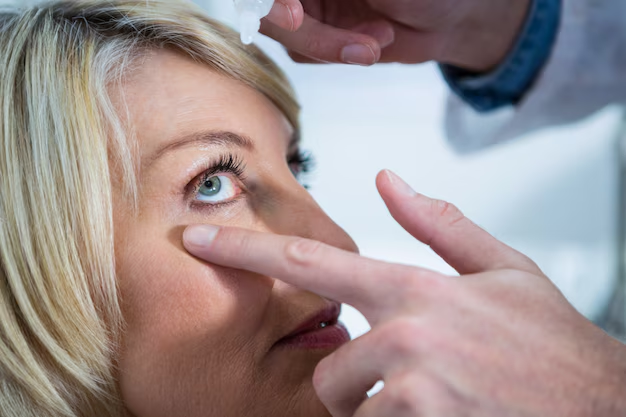Can Weed Really Help with Cataracts? Exploring the Connection
If you've ever asked yourself whether cannabis might play a role in managing cataracts, you're not alone. With the growing interest in medical marijuana, many are curious about its potential benefits for a variety of ailments, including eye conditions like cataracts. This article aims to delve into this topic, answering common questions and providing insights based on current understanding and observable trends.
🌿 Understanding Cataracts
What Are Cataracts?
Cataracts are a clouding of the eye's natural lens, commonly affecting individuals as they age. This condition can impair vision, leading to symptoms such as blurry vision, difficulty with night vision, and seeing "halos" around lights. While cataracts can develop in one or both eyes, they do not spread from one eye to the other.
Causes and Risk Factors
Cataract formation is primarily associated with aging. However, several risk factors can contribute, including:
- Genetics
- Diabetes
- Excessive exposure to sunlight
- Smoking
- Long-term use of corticosteroids
- Previous eye injuries
Understanding these factors is crucial, as they inform lifestyle adjustments that might help slow cataract progression.
🌱 Exploring Cannabis and Eye Health
Can Cannabis Affect Eye Conditions?
Cannabis has been studied for its effects on various health conditions, particularly due to its active compounds known as cannabinoids. The two most well-known are THC (tetrahydrocannabinol) and CBD (cannabidiol). Historically, cannabis has been noted for its potential to reduce intraocular pressure, a major factor in glaucoma, another eye condition. This ability sparked interest in its potential benefits for other eye-related issues like cataracts.
The Science Behind Cannabis and Cataracts
There is currently limited evidence directly linking cannabis use to improvements in cataract conditions. While cannabis may provide symptom relief in terms of easing associated discomfort or inflammation, it is important to note that it does not reverse or cure the clouding of the lens caused by cataracts.
However, the anti-inflammatory properties of CBD have led some to speculate about potential indirect benefits, such as reducing associated discomfort or irritation. Researchers are still exploring the full scope of cannabis' effect on eye health, and more concrete studies are needed to substantiate any claims regarding cataracts.
🤔 What Do Experts Say?
General Consensus
The prevailing viewpoint among eye care professionals suggests that while cannabis may offer some symptom relief, it is not a treatment for cataracts. The main treatment for cataracts is surgical removal of the cloudy lens, followed by replacement with a clear artificial lens, which effectively restores vision in most cases.
Potential Benefits and Limitations
Cannabis may still play a complementary role for individuals with cataracts, by possibly aiding in pain relief, reducing inflammation, or improving overall quality of life. Yet, these potential benefits should never supersede professional medical advice or replace mainstream treatment methods.
🗝️ Key Takeaways on Cannabis and Cataracts
Here's a quick summary of the main points to consider when evaluating the role of cannabis in managing cataracts:
- Symptom Relief: Cannabis may offer relief from certain discomforts associated with cataracts, such as inflammation or mild pain.
- It's Not a Cure: There is no evidence that cannabis can prevent, treat, or reverse cataract formation.
- Consult Healthcare Professionals: Always seek advice from healthcare providers before considering cannabis as part of your health management plan.
- Legality and Accessibility: Understand the legal status of cannabis in your region, as it varies widely across locations.
🌐 Navigating the World of Medical Marijuana
Legal and Accessibility Considerations
The legal landscape for cannabis use can vary tremendously. Understanding your local laws and regulations is paramount, especially when considering it for medical reasons. Access to medical cannabis is often governed by specific criteria, so getting informed about these regulations can ensure compliance and safe usage.
Potential Risks and Side Effects
Like any substance, cannabis comes with potential risks and side effects. Some users may experience:
- Altered mental state or drowsiness
- Increased heart rate
- Short-term memory issues
- Respiratory issues (when smoked)
Awareness of these effects helps in making informed decisions about usage.
Future Research and Developments
As research into cannabis continues, we can anticipate more targeted studies focusing on eye health and conditions like cataracts. Advancements in cannabinoid-based therapies hold promise, offering potential new avenues for symptom management or adjunctive treatments in the future.
👁️ Conclusion: What Lies Ahead?
While interest in cannabis as a therapeutic agent for eye health is high, concrete evidence supporting its efficacy for cataracts remains elusive. However, its potential benefits for symptom relief should not be discounted. As with any health decision, it is crucial to engage in informed discussions with healthcare providers, considering all available treatment options.
Curiosity and research will continue to drive understanding in this space, and keeping an eye on emerging studies can provide further insights in the years to come. Until more definitive information is available, it is wise to approach cannabis use for cataracts with cautious optimism.
